Secure Steps
Safeguarding Business Integrity
Cybersecurity isn’t just about ticking boxes – it’s about staying one step ahead. The digital landscape is full of rising threats, but with proactive strategies, you can outsmart them. Turning defence into opportunity doesn’t just shield your organisation, it empowers you to lead the charge and leave competitors trailing behind.
Understanding the Basics
Cyber threats are becoming increasingly sophisticated, but understanding the key risks can help you stay prepared. Here are common types of attacks you should know about:
Spear Phishing
Email phishing is a broad attempt to deceive recipients into clicking malicious links or providing sensitive information.
Spear phishing on the other hand is a targeted attempt to deceive a specific individual or organization with sophisticated emails tailored to the target.
Whaling
Whaling is a social engineering attack that targets high-level executives or other high-profile individuals in order to steal sensitive information or financial data.
Vishing
Vishing is a social engineering attack that uses phone calls to trick victims into revealing sensitive information.
Smishing
Smishing is a social engineering attack that uses text messages to trick victims into revealing sensitive information.
Pharming
Pharming is a social engineering attack that redirects users to fraudulent websites resembling the legitimate site, aiming to trick them into entering personal information for unauthorized access. These attacks are ever evolving, especially with AI
How Phishing Works
Social engineering is an attack vector that relies on human interaction to manipulate people into giving up sensitive information
or taking actions that compromise security. Social engineers use a variety of human-based attacks which include phishing.
Select the bait
Threat actors pose as trusted entities (e.g colleagues or reputable organisations) to deceive victims into sharing sensitive information or downloading malware through enticing email subject lines, such as alerts or information requests.
Set the hook
Threat actors use a variety of techniques to trick users into clicking on malicious links or opening infected attachments. These techniques can be very effective, as even a single bite can lead to successful exploitation.
Reel in the catch of the day
The threat actor successfully exploits a victim when an email bypasses network or endpoint protections and the victim responds with valuable information or interacts with malicious links and attachments, enabling the theft of sensitive data or compromising the endpoint with disguised malware.
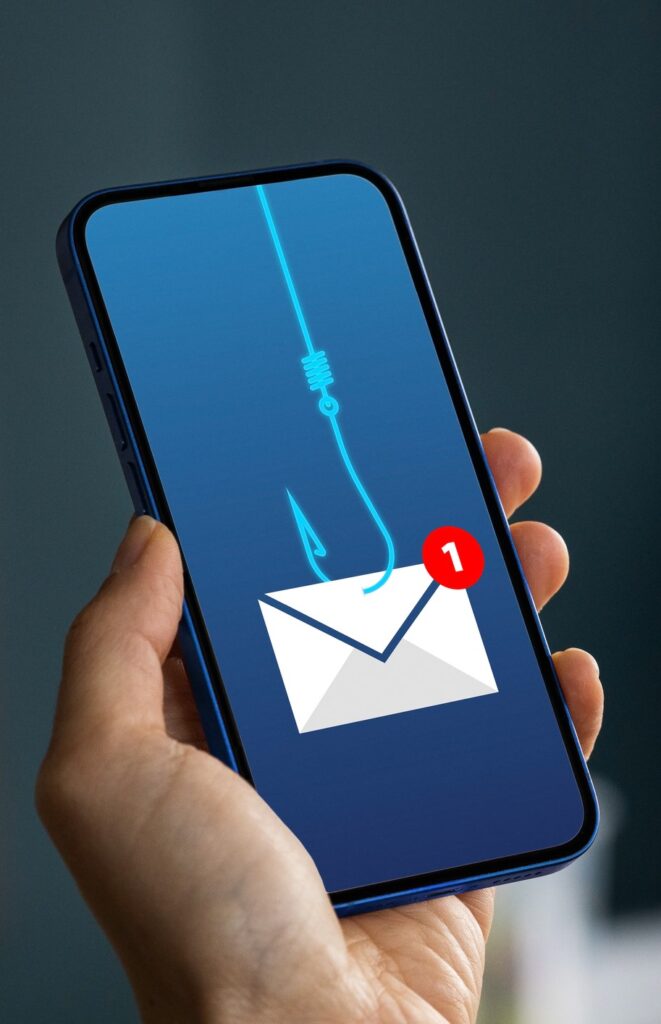
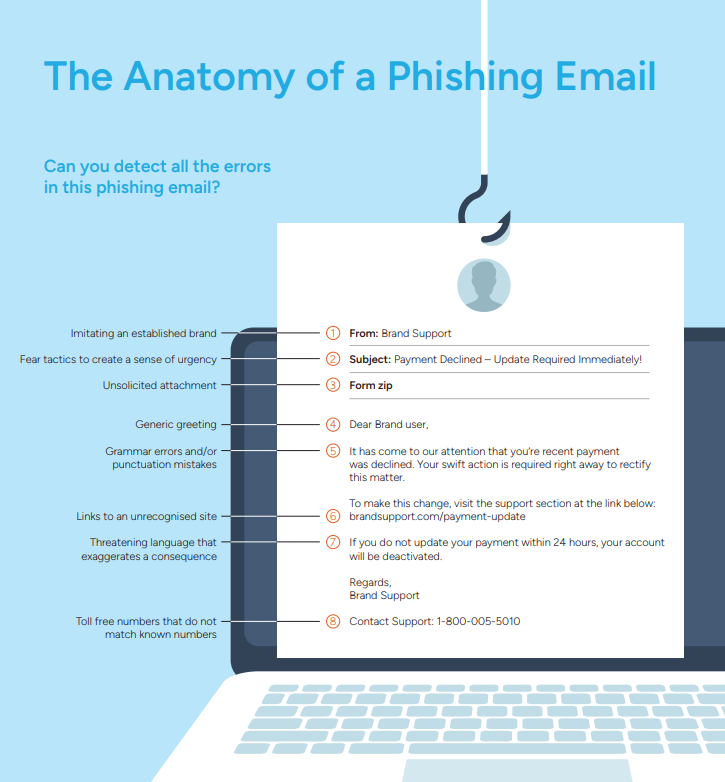
What happens if you click on a link in a phishing email?
Identity Theft
When you click on malicious links or open infected attachments in emails from unknown senders, a cybercriminal can have access to your personal information, which can be used to commit identity theft, such as opening credit card accounts, taking out loans, or filing fraudulent tax returns.
Malware Infection
When recipients unknowingly click on malicious links or download infected attachments, this can lead to installation of malware on their devices. Once the malware is installed, it can compromise the security of the system, steal data, or allow unauthorized access to the victim’s device and network.
Business Disruption, Revenue Loss, and Reputation Damage
When employees fall victim to deceptive emails and unintentionally divulge sensitive company information or credentials to cybercriminals, the company becomes vulnerable to data breaches, financial theft, or unauthorised access to critical systems. This can result to serious financial losses, reputational damage, and significant operational disruptions.
How Whaling Attacks Happen
Impersonation
Hackers may impersonate high-value individuals to convince lower-level employees to act quickly.
High-value targets
Hackers target CEOs, COOs, and company presidents who may have direct access to credentials or funds.
Infected links, attachments or landing pages
Embedded in the body of a text message or spoofed email, hackers deposit malware onto vulnerable devices.
Spoofed or urgent emails
These look almost identical to trusted emails from well-known brands or organisations which hackers use to ask for immediate action from the recipient.
Vishing Attack Mechanism
They pose as a legitimate authority to steal sensitive or financial data
They spoof caller ID and start calling numbers
Criminals harvest phone numbers of potential victims by war dialing or hacking
Beware of Smishing (SMS phishing)
First, the attacker sends a message containing a malicious link.
Then the user opens the text, clicks the link, and gives away private data.
Lastly, the data is used to commit fraud or for profit making.
Pharming Explained
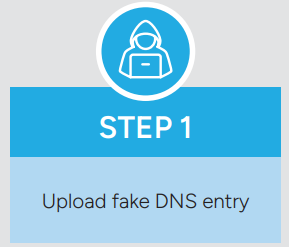
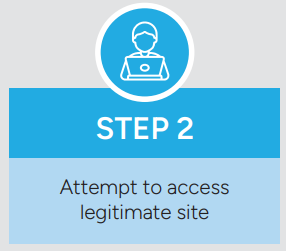
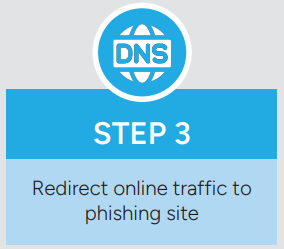

Cybersecurity by Numbers
How common are cyber attacks?
3.4bn daily
Phishing is the most common form of cybercrime globally, with an estimated 3.4 billion spam emails sent every day¹
Google blocks 100 million phishing emails daily worldwide²

23%
of phishing attacks worldwide were directed toward financial institutions³
£££’s
Each phishing attack costs corporations £3.98 million, on
average⁴
The average cost of the most
disruptive breach in the UK in the
past 12 months was approximately
£1,205 for businesses⁵
In the past year, 43% of UK businesses and 30% of charities reported experiencing a cyber
security breach or attack. This equates to approximately 612,000
businesses⁵
Google and Facebook
were scammed out of £75.5 million by fake invoice emails⁶
By 2028
the cost of cybercrime worldwide, which includes phishing scams, will reach £10.7 trillion⁷
Phishing is a major problem in the UK
85%
of UK businesses were affected by
phishing in the past year⁵
83%
of organisations that suffered a cyberattack in the past year said that it was caused by phishing
Half of employees in these organisations said they had received a phishing message in the previous month
How UK organisations deal with cybersecurity failures
77%
of UK organisations punish employees who interact with genuine or simulated phishing attacks
84%
of CISOs in the UK believe their companies are at high risk of a material cyberattack⁸
29%
of UK organisations terminate employees who interact with phishing attacks
Source: itgovernance.co.uk/blog/51-must-know-phishing-statistics-for-2023
- 5. https://www.gov.uk/government/statistics/cyber-security-breaches-survey-2025/cyber-security-breaches-survey-2025
- 6. https://www.cnbc.com/2019/03/27/phishing-email-scam-stole-100-million-from-facebook-and-google.html
- 7. https://www.statista.com/forecasts/1280009/cost-cybercrime-worldwide
- 8. https://www.statista.com/topics/8131/cyber-crime-and-companies-in-the-uk/
How to Handle a Successful Phishing Attack
Engage your IT support or a trusted service provider to handle the phishing attack.
Identify the breach source and involve users while fostering a culture of openness and security awareness.
Alert your business banks and update financial credentials, if necessary.
Conduct clean-up by changing passwords for accounts using similar login information as the stolen one.
Utilise the incident as a learning opportunity for your team, offering security training and resources to improve your company’s defenses against future attacks.
Building a Cyber Resilient Modern Workplace:
Essential Cyber Hygiene Practices
Cyberattacks aren’t a question of ‘if’ but ‘when’. That’s why cyber resilience – the ability to prepare for, adapt to, and recover from attacks – is essential for every business. Today’s hyperconnected workplaces demand a proactive approach to security. By building resilience, you gain customer trust, protect your reputation, and keep critical systems running smoothly.
Multi-Factor Authentication (MFA)
This adds an extra layer of security beyond passwords.
Implement Azure Active Directory (Azure AD) Multi-Factor Authentication to significantly strengthen login security.
Zero Trust Principles
This approach emphasises continuous verification of user and device identity before granting access, minimising privileges, and assuming a potential breach exists.
Verify Explicitly: Utilise Azure AD Conditional Access to enforce multi-factor authentication and device compliance checks before granting access.
Grant Least Privilege: Leverage Azure AD Privileged Access Management to control
access to critical resources and minimise the attack surface.
Assume Breach: Implement Microsoft Defender for Endpoint and Microsoft Sentinel for continuous threat detection, investigation,
and response.
XDR and Anti-Malware
These proactive tools continuously scan for threats, detect suspicious activity, and block malware, providing valuable security insights for
further analysis and response.
Utilise Microsoft Defender for Endpoint, a comprehensive XDR solution that detects, investigates, and responds to threats across your endpoints.
Software Updates
Regularly updating firmware, operating systems, and applications is crucial to patch vulnerabilities exploited by attackers.
Microsoft Endpoint Manager allows for
centralised management and deployment of security updates across devices.
Data Protection
Identifying your critical data, its location, and current security measures allows you to implement appropriate safeguards to protect sensitive information.
Leverage Microsoft Information Protection (MIP) to classify, label, and protect sensitive data across platforms.
Microsoft 365: Secure Your Business,
Focus on Success
The modern workplace demands secure and efficient tools that empower teams to collaborate seamlessly, regardless of location. Microsoft 365 delivers a comprehensive suite of cloud-based applications that cater to this evolving landscape.
Stay Focused
Secure your Chats
Make Decisions Faster
Identity and Access Management
Information Protection
Say goodbye to distractions. Customised notifications prioritise what truly matters, keeping your team on track with ease.
Whether it’s private messaging or brainstorming in a group, Teams encrypts your conversations, so your ideas stay protected.
No more lengthy meetings. Share ideas, collaborate, and decide with speed and confidence to keep things moving.
Protect users’ identities and control access to valuable resources based on risk level.
Ensure documents and email are seen only by authorised people.
Your Move.
Take the Next Step
At Intelliworx, we can help you and your team fight phishing and other cyberattacks every day.
Join us for an exclusive webinar, designed specifically to help you get ahead of digital threats and secure your business confidently.
- When: 11th June
- 12:30 pm – 1:30 pm BST
Contact us at [email protected]
Visit https://intelliworx.co/uk/contact
